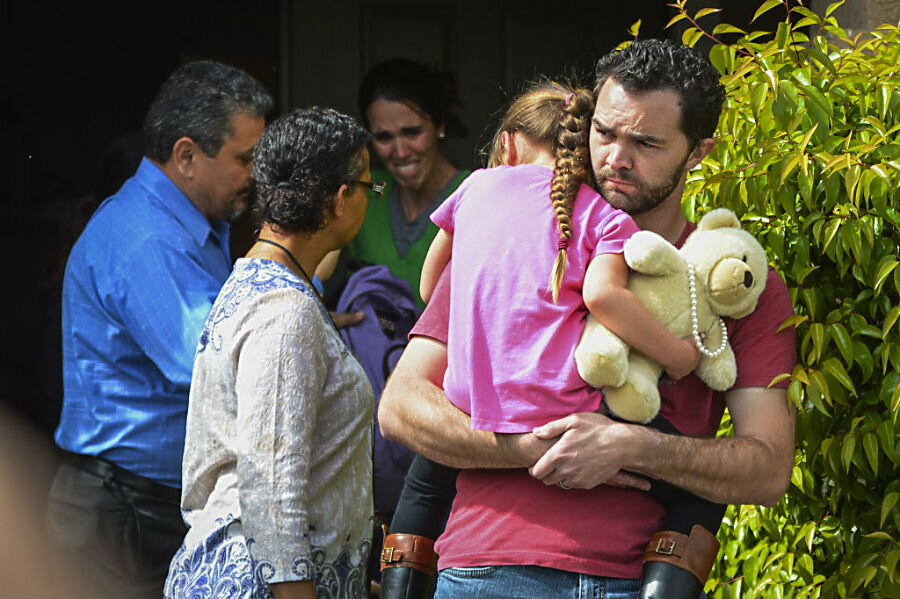Should native American families have precedence in foster placement?
Loading...
The US Department of the Interior announced a new federal rule this week that requires judges to ask if a child if native American during all foster-care and adoption proceedings.
The regulation, which does not go into effect until December, strengthens the Indian Child Welfare Act, a controversial law requiring that all native American children who go into the foster care system be placed with relatives or native American families.
"One of the challenges has been the courts not knowing to ask that very simple question just at the outset," Larry Roberts, the Interior Department's assistant secretary for the Bureau of Indian Affairs, told the Associated Press. "Even though it's a very simple question, it will make a world of difference for children and Native communities."
The Indian Child Welfare Act has been contested numerous times since it became federal law in 1978.
The act was recently challenged in the high-profile and emotionally charged case of Lexi Page, a 6-year-old Choctaw girl who was placed in the care of her father's relatives in Utah after her foster parents of four-years lost a lower court and then California Supreme Court case to keep and adopt her.
The lower court ruled against the foster family in favor of the Indian Child Welfare Act standards on the grounds that, their representation "had not proven by clear and convincing evidence that it was a certainty the child would suffer emotional harm by the transfer."
In another recent case, Adoptive Couple v. Baby Girl, however, the US Supreme Court ruled in favor of adoptive parents. In those proceedings, the child's father who is a Cherokee, never had custody of the child and had signed the original adoption papers, although he later said he was under a mistaken impression about what they meant. The court ruled that because he never had custody that Indian Child Welfare Act did not apply.
The Indian Child Welfare Act routinely faces legal challenges, as native American children are placed in the foster care system at a disproportionate rate. According to the Bureau of Indian Affairs, native American children are removed from their families and placed in state foster care at a rate 2.5 times greater than their presence in the general population.
The Indian Child Welfare Act descends from a history of human rights abuses of native Americans and subjugation of their culture, as the Christian Science Monitor's Bamzi Banchir explained in March:
The act was passed to amend historical practices that saw native American children taken from their families and communities and placed in boarding schools in an attempt to 'solve the Indian Problem' – native Americans were depicted as 'savage heathens' – by assimilating them into mainstream American society....
Advocates of the law say that even with the act, native American children are still removed from their communities and placed with foster families where they end up losing their native identity that the communities have fought to preserve. An NPR investigation found that 90 percent of children in South Dakota, for instance, are placed in non-native families.
Others contend that such cases are being used as plots to dispute the act. Matthew Fletcher, the director of the Indigenous Policy Law Center at Michigan State University told Time that lawyers representing the Santa Clarita foster family are 'using this to attack tribal sovereignty, attack Indian people, and attack the Indian Child Welfare act,' he said referring to Lori Alvino McGill one of the lawyers representing the Pages, who also represented the birth mother in the Couple v. Baby Girl case.
Opponents of the law argue that it places native American children in an unequal position to other children because it requires to place more weight on the child's tribal affiliation rather than what might be "in the best interests of the child," the standard for family courts.
The American Academy of Adoption Attorneys came out against guidelines issued last year by the Bureau of Indian Affairs that promoted the explicit judicial questioning about native American heritage. Another group, the Arizona-based Goldwater Institute, is contesting the constitutionality of the new rule in a class action lawsuit
"The Indian Child Welfare Act creates a separate and unequal system for Indian children," Timothy Sandefur, vice president for litigation at the Goldwater Institute, told the Associated Press. "It is more difficult to protect these children from abuse, more difficult to find them safe and stable and loving families."
The new regulation was passed in conjunction with the Justice Department and Department of Health and Human Services and the Department of the Interior held several hearings with tribes during its formulation.
At its announcement, Interior Secretary Sally Jewell said that the new rule "reflects the highest standards in child welfare."
This report includes material from the Associated Press.





